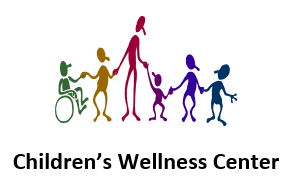What is a Cold or Sinus Infection?
A cold is an infection of the nose and sinuses caused by a virus, while a “sinus infection” is caused by bacteria in the nose and sinuses. Their symptoms are virtually identical and include nasal congestion, runny nose, cough, sore throat, headache and fever. You may notice nasal discharge that changes from clear to yellow to green in either case. Colds are much more common than sinus infections. Normal healthy children can have 6-12 colds a year. They are often clustered in the cold weather months and happen more frequently during the first year of daycare or preschool.
What Can You Do For A Cold Or Sinus Infection?
There is no way to prevent your children from ever getting a cold. You can reduce their frequency somewhat with good hand washing and avoiding sharing food and drink. You can prevent them from spreading cold viruses by keeping them home when they are sick and teaching them to cough and sneeze into their elbows. But young children get colds fairly often simply because they do not have immunity to the viruses that cause colds yet. As they get older and develop immunity, they will get colds less frequently.
Colds vs. Sinus Infections
So how can we tell colds and sinus infections apart? The truth is that it is very difficult. For that reason, the American Academy of Pediatrics has established guidelines to help make an accurate diagnosis. Children should be treated with antibiotics for a sinus infection only if they have severe (high fever for 5 or more days, pus draining from the sinuses) or prolonged (more than 10-14 days) symptoms. They should never be treated with antibiotics to prevent a sinus infection when they first catch a cold.
What About Antibiotics?
What is the harm in just giving an antibiotic? Any medication carries the risk of side effects. Antibiotics can cause anaphylaxis and other allergic reactions, rash, vomiting, diarrhea and headaches among other things. Every time your child takes an antibiotic, it increases the chance that he will develop an infection that is resistant to that antibiotic in the future. To minimize the risk of side effects and resistant infections like MRSA, it is extremely important that your child take antibiotics only when truly needed for a bacterial infection.
Treating A Cold At Home
So what can I do? For cold symptoms, do your best to keep your child comfortable. You can use acetaminophen (Tylenol) or ibuprofen (Motrin/Advil) for fever or pain. For congestion, you can use nasal saline drops and, in younger children, a bulb syringe to help clear excess mucus. Try a cool mist humidifier at bedtime, and give an older child an extra pillow to reduce night time cough from postnasal drip. For children over 12 months, you can also try a spoonful of honey for cough or a honey-based cough medicine. We do not recommend over the counter cough and cold preparations as they have never been shown to be effective and carry the risk of serious side effects.

